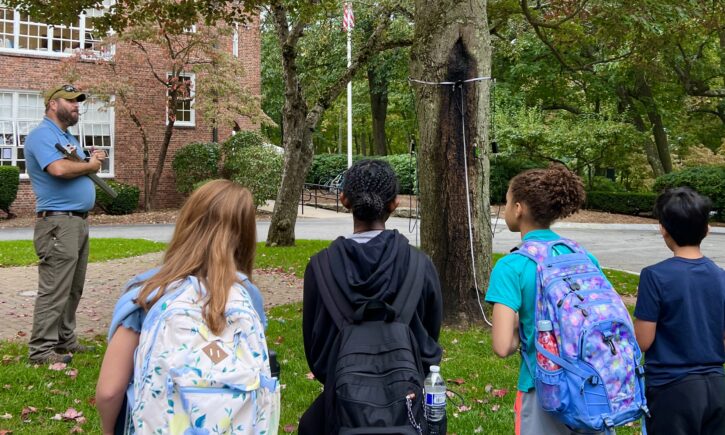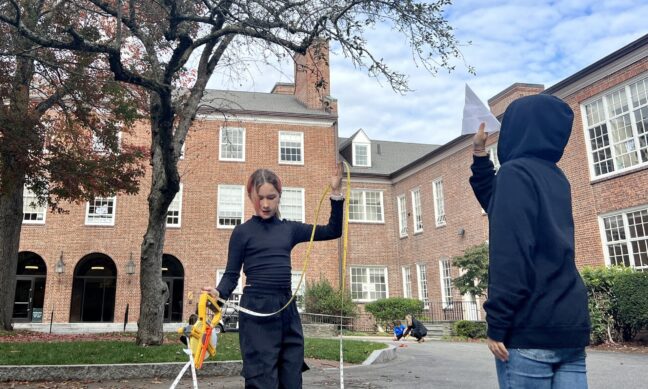Class: Science 6: The Science of Place
Grade: 6
Teacher: Kristina Klammer
What influences the changing of leaves in fall? Tree height? Species of tree? In Science 6, students set out to answer this question themselves.
The assignment started with a broad inquiry into fall foliage. By looking at pictures of trees and the various colors that emerge during the season, the class started forming questions about the phenomenon. Students considered the variables that may be influencing the color change including tree height, percentage of leaves dropped, species of tree, and more. It was up to each individual student to select which variable they would like to investigate further.
I hope that this project helps students recognize that anyone can be a scientist … I want to help ‘[students] gain confidence and realize that anyone can ask their own questions and design an experiment to find out the answer.
-Kristina Klammer, Middle School Science

The process of collecting data was the next step for the class. In the front circle, students identified trees to investigate and recorded their height, circumference, species, and how many leaves had already changed. Unique methods were employed to collect this data; to measure tree height, students leveraged trigonometry by triangulating the height of their eye level, distance from the base of the tree, and the exact angle in which they could see the top of the tree.

Over the course of the fall foliage unit, an arborist coincidentally visited campus to run a series of tests on a tree in the front circle. Ms. Klammer used this visit to show students the intricate science that goes behind researching, up-keeping, and tracking a tree’s health. The arborist answered questions from the class and brought them in on the tests he was running to determine if the tree was fit to keep (spoiler alert: it wasn’t).

After the data was collected, analyzed, and compiled into presentations, students shared their findings. Each presenter was sure to included a hypothesis, procedure, materials and constants, graph, and conclusion on their research poster. When walking audience members through their scientific process, students articulated their entire experience starting from forming a question and ending with proving their conclusion.
My favorite part of the project was putting data onto my poster, it is easier to understand.
-Student reflection
Looking ahead, Science 6 will be shifting their focus from fall foliage to geology and plate tectonics. The class will also vote on which species should replace the ill-fated tree in the front circle once it is removed.
More about this course: What is home? How do I understand my place and impact in a larger system? In Science 6, we get outside and explore our sense of place through several lenses, including Earth science, ecosystems, and engineering. We challenge ourselves to examine systems big and small through field study by strengthening our observation, data collection, and data analysis skills.

